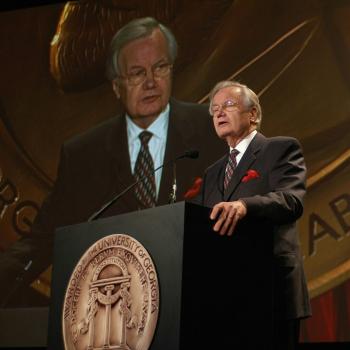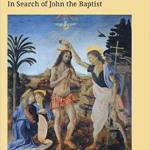
What is Advent?
Advent is a season within a season… a time when many Christians briefly put aside Santa, his elves and reindeer… stressful shopping trips to crowded malls… overspending… family arguments… and unfulfilled expectations for the holidays. Advent is a time when Christians seek the quiet, meaningful side of Christmas.
It’s a time of hope and joy, warmth and light within us. And this inner light shines even when the world grows cold and dark and winter hits us with its full force.
The Bible is filled with stories, prophecies and poetry about the coming of Christ. One of the best known and most beautiful verses is from Isaiah:
For a child will be born for us, a son will be given to us, and the government will be on his shoulders. He will be named Wonderful Counselor, Mighty God, Eternal Father, Prince of Peace (Isaiah 9:6)
Many Christians believe this verse affirms Jesus’ lordship and foretells the time when Christ rules over a literal kingdom on earth.
While Advent traditions vary from one church, denomination or community to another, many Christians begin this season-within-a-season by recalling Christ’s promise to return to earth. And many of us conclude it by turning our attention to his birth.
The Beauty of the Season
Author, philosophy professor and Patheos contributor Vance Morgan writes about Advent. But rather than focusing on various Advent traditions as I have done, he beautifully recounts his own experiences with the quiet and meaningful side of Christmas in his new post, “A Brief Introduction to Advent,” here.
He describes his introduction to the Episcopal church and to Advent, his deepening commitment to his faith and his first celebration of Advent. “I love Advent’s call to centeredness, to watchfulness, to expectation, its hymns, and its purple,” he writes.
Like me, he grew up in the Baptist church and knew nothing about Advent until he was grown. And like me, he found this season compelling and meaningful.
The Quiet, Meaningful Side of Christmas
The word “advent” means “arrival,” and during Advent, Christians anticipate the arrival of the Christ child. This focus on Christ gives the season the spiritual meaning it should have.
While the secular world kicks off Christmas with colorful store displays in October, many Christians choose to wait until December and celebrate the quiet, meaningful side of Christmas. Yet, it isn’t and either/or situation. My guess is that most Christians celebrate the spiritual and the secular aspects of the season.
How long have people been commemorating Advent? “The earliest dating of Advent is impossible to determine,” according to the Gospel Coalition.
“Christmas came to be associated with the birth of Christ as a result of falling during the December Solstice, the darkest day of the year in the northern hemisphere. The coming of the Light of the World made a lot of sense.
“In the early centuries of the church, Advent almost certainly arose as a result of the fixed dating of Christmas…. By the fourth century, the first written evidence of Advent is found in modern Spain and Europe (Hispania and Gaul),” the Gospel Coalition said.
Advent’s Meaning
Regardless of its beginnings, Advent focused on two points: the coming of Christ as a human being and his second coming. And humanity’s place was somewhere between the two points.
In modern times, many Christians light candles and read scripture at the very least. But the quiet, meaningful side of Christmas has come to mean more.
It has come to mean slowing down our hectic lives, digging more deeply into our faith and working toward a stronger relationship with God.
Advent Traditions
There is no one “right way” to celebrate Advent, as traditions vary from one church or denomination to another. But they may include the following:
Advent wreaths are made of evergreens, which symbolize the everlasting life we are promised through Christ. And the wreath’s circular shape reminds us that God has no beginning and no end. “How Silence Deepens Your Roots in the Lord” offers more information about the symbolism.
Lighting candles placed around the Advent wreath is another meaningful tradition. Worshippers light one candle on the first Sunday of Advent, two candles the following Sunday, and so on until all five candles are lit.
“Some families enjoy saying prayers and blessings as they light a candle on the wreath each Sunday. In family practice, the Advent wreath is most appropriately lit at dinner time after the blessing of the food,” according to the Christian-based Legacy Roots organization.
Placing a Chrismon tree in the chancel or nave of a church is a fairly new tradition. North American Lutherans introduced this symbol of Christian Christmases in 1957, and Anglican, Methodist, Catholic and Reformed churches now incorporate it into their services.
These evergreen trees symbolize our eternal life through Christ, just as other evergreens do during Advent. However, their appearance differs from ordinary Christmas trees in that they are decorated with clear lights and Christian symbols made from white and gold material, which tell Christ’s story.
Scripture readings are a favorite Advent tradition for many Christians. To help you get started, the BibleProject has a 28-day plan that incorporates animated videos, readings, questions and other aids to help you “explore the biblical meaning of hope, peace, joy and love.”
Advent calendars are a good way to count down the days until Christmas. They also may serve as visual prompts about the days left until Christmas and reminders to pray and read scripture more often. They may be made of paper, fabric, wood or other materials and may be quite simple or very extravagant. Some handmade calendars have a special place in a family and are passed from generation to the next.
Taking extra time for prayer and meditation is an excellent way to observe Advent. You may want to read scripture, devotionals or other special Advent materials. A good choice is to read one chapter from the gospel of Luke every day from Dec. 1 to Dec. 24. This scripture sets the stage for Christ’s birth and beyond.
Solitude is important as you open your heart and celebrate this quiet, meaningful side of Christmas. It gives you the opportunity to spend quality time with the Lord and deepen your relationship with him.
One of the most peaceful moments in my life occurred in church one Sunday before Christmas. As a guitarist softly played Christmas songs, I closed my eyes and opened my heart to God. The rest of the congregation faded away, as did my stress. I felt as if I were alone with the Lord. And the peace that enveloped me that Sunday is something I remember to this day.
Serving others should be important to Christians year-round, but it’s an especially meaningful way to celebrate Advent. Volunteer at your church to visit homebound members or contact a service organization about serving holiday meals or delivering food baskets to people in need. Or use your imagination to think of other ways to serve others.
The Hope & Joy of Advent
Catholics, Protestants, Orthodox and other Christian traditions celebrate Advent. Specific practices vary from one church, denomination or community to another, and while Advent observances look different throughout Christendom, Christians should remember the hope and joy we share during Advent.













